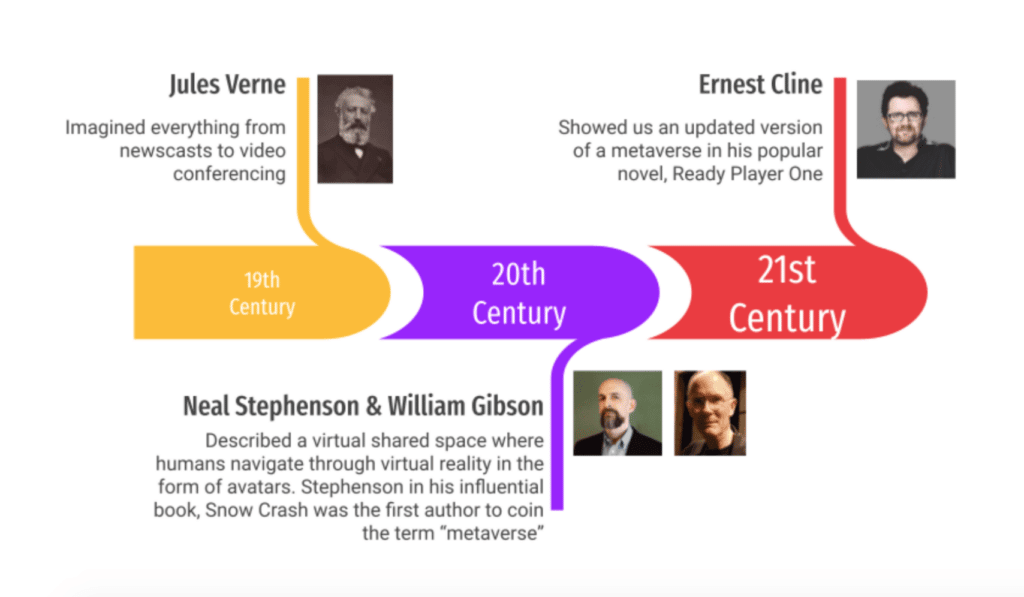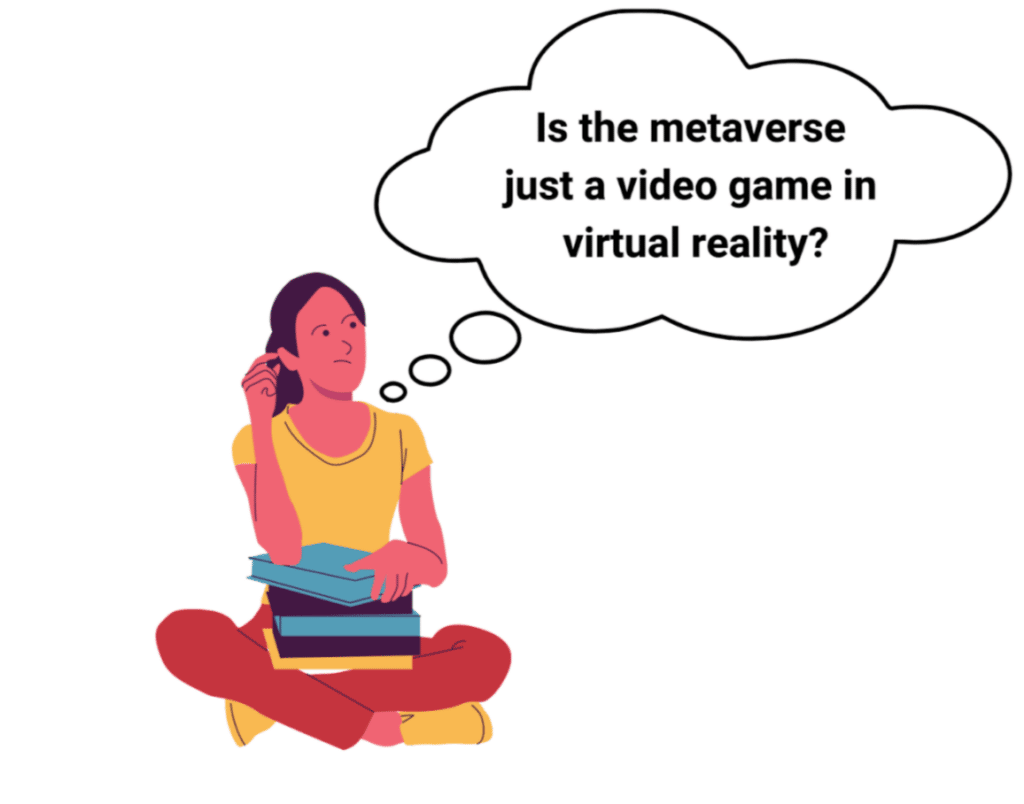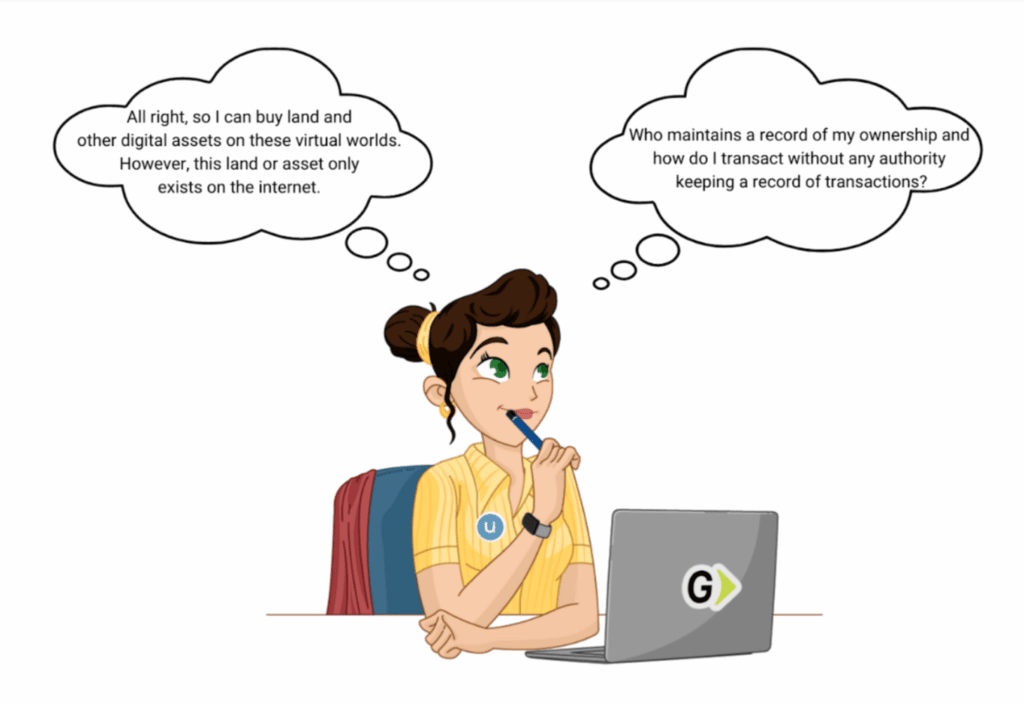One of the hottest buzzwords of 2021 was the “Metaverse.” Every technology company appears to have its own Metaverse strategy. But, what is the Metaverse? Do we really understand Metaverse?

While there are multiple articles on the internet trying to explain the concept, most of them are diffuse and confusing.
In this article, we will attempt to explain the concept of the Metaverse and all the associated technologies in the simplest possible way.
But first, in order to understand the concept of the Metaverse, it is necessary to understand its origins.
The beginning of the Metaverse
Futurists or science fiction authors have always had a knack to spot technology trends, projecting where they will take us, and envisioning solutions to problems humanity is facing. One of those trends is often around human interconnectedness.

These seminal ideas hugely influenced the tech community which adopted interconnectedness as a mantra and attempted to implement many of these ideas in reality. This also led to the rise of multiplayer online games and virtual worlds.

Today, Metaverse developers and builders often remark that they are trying to resurrect the world described in Ready Player One.
The Virtual Economy
The first virtual economies began to take shape in gaming worlds. As mentioned before in the case of Second Life, people started accumulating currency which they could then use to buy, rent, and sell virtual assets. Underpinning Second Life’s economy was the Linden dollar, a virtual currency that was redeemable for real currency. Interestingly, these games created a regulatory pathway for cryptocurrencies which would be invented soon after.
Many younger people are comfortable interacting with others online in shared virtual spaces, particularly in gaming worlds. Does it mean the Metaverse is being built for them? Possibly, yes! After all, youth is the hope for our future..
To give you a perspective, the gaming world today is bigger than the movie and music industries combined, and it is growing exponentially. Though it doesn’t get the same attention that the movie and music industry does, there are roughly 2.8 billion gamers across the world. That is roughly 35% of the world’s population! Nazim Zeeshanthe shows us that gaming has been pandemic proof:
Once limited to arcades or PCs, video games have taken a giant leap forward with the growth of the Internet. A NewZoo chart shows just how many billions of dollars the gaming industry is set to make in 2023:

Younger people are comfortable meeting friends and playing with them online. Previous generations used to hang out with friends in parks or in malls. Increasingly, younger people today like to hang out and chat online as they play games together. This trend accelerated even more during the isolation of the COVID-19 pandemic. While in some sense this keeps us further apart, the interconnectedness also can draw people closer together.
Defining the Metaverse
With that background, let’s define the Metaverse with one of the most commonly referenced descriptions by Matthew Ball, author of the extensive Metaverse Primer.
“The Metaverse is an expansive network of persistent, real-time rendered 3D worlds and simulations that support continuity of identity, objects, history, payments, and entitlements, and can be experienced synchronously by an effectively unlimited number of users, each with an individual sense of presence.”
Simply put, it’s a shared 3D experience or an embodied, virtual version of the internet where we will constantly be within it rather than have access to it.
It’s a network of interconnected experiences, applications, devices and infrastructure.
Breaking the myth!

One of the most commonly cited myths about the Metaverse is that it can only be experienced through virtual reality (VR) headsets. The reality is that VR is just one of the mechanisms to experience the Metaverse, not the only means of doing so. Millions are participating in virtual worlds on a daily basis without VR or XR devices. Another misconception is that the Metaverse is a video game. While people will play games in the Metaverse and garner rewards by doing so, those games are in the Metaverse, not the Metaverse itself.
Some of the most popular virtual worlds that are building a Metaverse


By now you must be wondering…

To answer these questions, we need to understand some important concepts –
- NFT – An NFT (sometimes pronounced as “nifty”) stands for Non Fungible Token, basically something that is unique and cannot be exchanged with something else. For example, diamonds are non fungible. Individual diamonds have different cuts, colors, sizes, and grades, they are not interchangeable. In the Metaverse, a virtual land is one type of NFT. It could even be a gaming figure or an in-game asset, or even digital art.
- Blockchain is a shared, immutable ledger that facilitates the process of recording transactions and tracking assets in a business network. It increases trust, security, transparency, and the traceability of data shared across a business network.
- Smart contracts are self-executing agreements that are written into lines of code on the blockchain. They use embedded conditional logic (‘if this, then that’) to execute a contract once its terms have been fulfilled. Because those terms are coded, a smart contract eliminates the need for trust: you don’t have to know or trust the other party in the transaction. As autonomous, self-executing agreements, they can work without the use of lawyers, notaries, or other agents. When you purchase an NFT, you will do so by smart contract.
In general, the NFT images themselves are not stored on the blockchain due to large file space. They usually exist on the distributed web in a repository such as the InterPlanetary File System (IPFS). Their metadata is tied to the NFT token by a unique string of numbers called a cryptographic hash, and that gives your token verifiable proof of ownership.
4. Etherum is a decentralized, open-source blockchain with smart contract functionality. It was primarily designed for smart contracts which are possible on some other blockchains as well, but Etherum continues to host most of the NFTs.
NFTs and their potential
Humans have always had a tendency to acquire, revealing our style, status and identity through possessions – something psychologists call ‘the extended self.’ In the digital age, consumers are divesting themselves of material possessions, either to de-clutter or to further sustainability efforts. In this context, the virtual economy is thriving. More consumers are buying, trading, and flaunting digital assets such as virtual fashion, NFTs and cryptocurrency. The opportunities for brands are myriad; for example, luxury brands making their goods more accessible with digital versions can create loyal brand advocates who may become real-life customers down the line.
One way to look at the Metaverse is as an internet of value. It’s about giving opportunities to everyone. Normal people have not been able to own Van Goghs, appreciating their artistic qualities and participating in their price appreciation over time…but now they can. They can own a fraction of one as an NFT. Or they can rent it. Not only can they own a stake in the item’s possible increase in value over time, they also can earn from it by staking its value in a decentralized finance (Defi) transaction, and perhaps earning interest on the asset.
NFTs will revolutionize many industries. Let’s take the example of music. An artist can have a direct transaction with a fan by having the NFT as a key that unlocks a song or an album. Sales are handled through smart contracts. Purchasing the NFT provides the user with access to the item. The artist gets to keep that money without having to pay most of it to a record company. This concept can be applied to not just musical artists but also visual artists, too.
Two of the largest NFT markets as of today are OpenSea and Rarible.

What about the challenges specific to NFTs such as gas fees, network latency, and high energy consumption levels?
To mitigate these challenges, the technology behind cryptocurrencies is actively being evolved. Currently, the annual carbon footprint of Ethereum transactions is comparable to the entire country of Norway, but a planned update could result in about 99.95% less energy consumption, according to the Ethereum Foundation.
The Metaverse is truly a massive opportunity to serve an audience that is deeply engaged in digital content creation and monetizing from the distribution of content on the blockchain.
Going back to the premise of interconnectedness based on a shared 3D experience…
VR headsets provide a high fidelity, fully immersive experience and are touted as one of the main technologies to experience such virtual worlds rather than simply experiencing it on computer monitors or mobile devices. However, the usual criticism associated with VR headsets is that as of today, they are expensive, clunky or uncomfortable hardware, and therefore not mainstream.
Holograms are yet another mechanism to experience 3D content. There is some exciting development in that field to create holograms that you physically interact with.
Some proponents of the Metaverse claim that AR and not VR will be instrumental in realizing the vision of the Metaverse. While the debate will continue to rage on for a while, AR may be a simpler transition for most people as we move toward more virtual imagery. Using the real world as a Metaverse playground is a fascinating approach that makes some sense.
What if the Metaverse is a dystopian vision?
While showcasing the promise of a shared virtual world, Snow Crash and Ready Player One also presented dystopian visions. In each story, the Metaverse world was owned and operated by big, nasty corporations that exerted authoritarian control. They became greedy, extracting their pound of flesh from the poor souls who became dependent upon them. Would these large corporations building these virtual worlds also do so with us?
If we fail to make the right societal decisions now regarding matters of privacy, security, interoperability, and trust in an age where powerful computing will literally surround us, we will not be able to avoid a technological “lock-in,” where dysfunctional and/or proprietary technologies become permanently embedded into the infrastructure of our global systems leaving us powerless to alter the course of their direction or ferocity of their speed.
What about the infrastructure and the computing power required to support such a mass adoption of the Metaverse?
According to Cisco’s annual internet report, Nearly two-thirds of the global population will have Internet access by 2023, and the number of devices connected to IP networks will be more than three times the global population. 5G is the fifth generation of cellular networks. Up to 100 times faster than 4G, 5G will provide the infrastructure backbone for realizing the Metaverse. With promising developments in the field of quantum and optical computing, we will see faster-computing speeds while requiring less power.
Is the Metaverse the same as Web 3.0?
Web 3.0 is a reference to the next phase of the internet that envisions the web as largely run by users using blockchain technology, rather than it being run by corporations. The Metaverse as we know today is being developed by large corporations separately, so we can say that the Metaverse is a virtual immersive world under the aegis of Web 3.0 not Web 3.0 by itself.
More to come about Web 3.0 in an upcoming series…
To conclude, one thing is certain, the Metaverse is only the beginning of a movement that will change the way our digital society operates, including digital strategy, sales, advertising and social networks.
Know more about our Metaverse Studio







